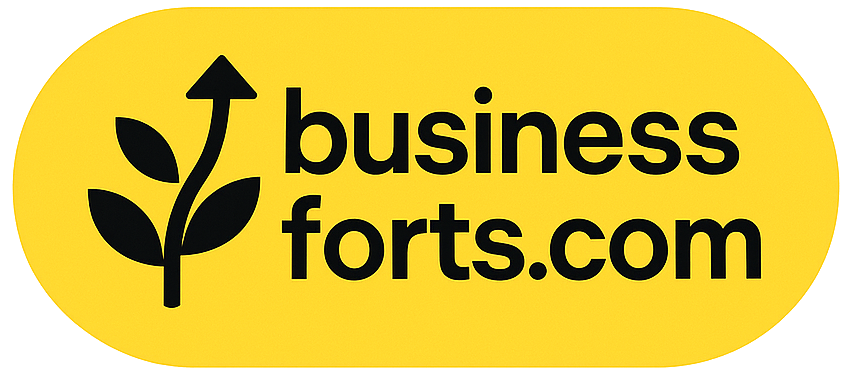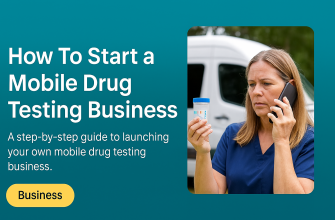Thinking about launching your own recruiting agency? You’re stepping into a huge and growing industry, and your skills – especially as a woman leader – are a perfect fit. Recruiting is all about connecting people to the right opportunities, and as a naturally relational entrepreneur you can excel at it. The staffing industry is booming: the global recruitment market was about $757 billion in 2024 and is projected to climb to over $2.29 trillion by 2033. That growth means companies everywhere will need help finding talent. And you won’t be alone – in fact over half of executive recruiters are women today, showing that women already have a powerful presence in this field. With demand high and many women-owned agencies already thriving, now is a great time to plan, prepare, and launch your recruiting business.
Understanding Your Market and Planning Ahead
Before you dive in, spend time on market research and planning. Identify who needs hiring help and where: for example, industries like tech or healthcare often have talent gaps, but don’t narrow yourself too soon – focus on general strategies first. Use free tools like Google Trends or the U.S. Bureau of Labor Statistics to spot industries with fast job growth and strong salaries. Also research your local area: talk to small businesses, non-profits, or community groups about their hiring challenges. Equally important is scoping out your competition. Study existing agencies in your region or online, and figure out what jobs they fill. As one startup guide puts it, “never enter a game without knowing its rules and who you’ll encounter”. In practice, that means listing potential competing agencies, noting the roles they hire for, and thinking how you could differentiate (even by customer service or flexibility).
Once you have insights, write a simple business plan. Outline your services (e.g. temporary staffing, permanent placements, or broad recruiting support), your target clients (startups? local companies? remote positions?), and your startup costs and revenue goals. A solid plan helps you stay on track and also can convince potential partners or lenders that you’re serious.
Setting Up Your Business: Legal and Financial Basics
Next, tackle the legal and financial setup. Decide on a business structure (common options are sole proprietorship, LLC, or corporation) that balances liability protection and ease of management. For example, an LLC often gives flexibility and shields your personal assets. Formally register your company name and get any required tax IDs (in the U.S., that’s an EIN from the IRS; in other countries, your local business registration). You may also need a license – in many places staffing firms must register with labor authorities (check your local regulations to be sure).
Alongside legal setup, budget your startup costs. Think through everything you’ll need: office supplies, a computer, a phone line, and most importantly, software. You’ll likely invest in an Applicant Tracking System (ATS) or recruitment software, plus subscriptions to job boards or professional networks. Other expenses include a CRM (Customer Relationship Management) tool to track clients, liability insurance, marketing materials, and perhaps accounting or legal fees. One guide lists things like office equipment, digital tools, recruitment software, and insurance as key expenses. Estimate how much cash you have saved and whether you need funding – small business loans, grants, or even a low-interest personal loan could help bridge the gap. Crucially, don’t go overboard on debt: keep your initial costs lean. Consider bootstrapping (starting small and reinvesting revenue) where possible, and track your budget carefully with spreadsheets or simple bookkeeping software. It’s wise to consult an accountant or business advisor at this stage – they can help you create a realistic budget and avoid surprises.
Building Your Network: Connecting with Clients and Candidates
Your recruiting business lives and breathes on relationships, so start building a network from day one. Attend local business meetups or industry conferences whenever you can. These events are networking gold – you’ll meet hiring managers looking for help, and also find potential job candidates. For example, even online forums or local chamber of commerce events can yield both client leads and referrals.
Next, actively assemble your candidate pool (talent you can offer clients). Try:
-
Posting real or mock job openings on major job sites like Indeed or ZipRecruiter.
-
Inviting candidates to your own website (consider a simple “Submit your resume” form).
-
Scouring LinkedIn and reaching out directly to people in your target industries.
-
Asking friends, former coworkers or contacts if they know anyone seeking a new role.
At the same time, work on finding clients (companies that need to hire). Start with who you know: let former colleagues, friends, and family know about your new business. You can send friendly messages on LinkedIn to HR managers or CEOs in your network, saying something like “I help small businesses hire great people – let me know if you ever need support.” Create a simple website or social media post that clearly describes your services. Even offering a small introductory discount or referral bonus can entice your first clients. Remember to use a recruiting CRM or even a spreadsheet to track every contact – you want to follow up and nurture each lead. By consistently reaching out and staying visible, you’ll start to get referrals and regular clients over time.
Tools and Technology for Success
Invest in the right tools to streamline your work. First and foremost, get an Applicant Tracking System (ATS) – this is software that lets you track candidates through screening, interviews, and placement. A good ATS will automatically parse resumes, track statuses, and even pull candidate information (like LinkedIn profiles) into one place. It saves hours of admin work and keeps you from losing track of any promising candidates. Equally, use a Customer Relationship Management (CRM) tool to manage your client contacts. A CRM helps you remember who you talked to, when to follow up, and what their hiring needs are. (If you’re just starting, even a well-organized spreadsheet or simple CRM is better than nothing.)
Besides ATS/CRM, set up a professional website and email. Your website can be very basic – just list your services, a little about yourself, and contact info – but it gives credibility. Make sure it works on mobile too, and include links to your social media. A custom email address (you@youragency.com) looks more official than a generic free email. Finally, consider some general small-business tools: accounting software for invoicing, a videoconferencing app for interviews, and a reliable calendar/phone system for scheduling interviews and calls.
Marketing Your Agency
Marketing isn’t expensive when you’re resourceful. Your goal is simply to make sure potential clients and candidates can find you and trust you. Start with the basics: set up a company page on LinkedIn (and maybe Facebook or Instagram if relevant) and post regularly. Share helpful content like blog posts on hiring tips, or even quick social media updates (“Top 3 traits to look for in an entry-level marketing hire”). Providing value attracts followers and positions you as an expert. In your business plan you might note strategies such as SEO (optimizing your website for search), social media, content marketing, or direct outreach (email or cold messages) – these are all sensible channels.
Some concrete steps:
-
Launch a basic website with a clear description of your services, a summary of your experience, and easy contact info.
-
Set up social media profiles, especially on LinkedIn, using consistent branding (logo, colors, tagline).
-
Create and share useful content – for example, post a monthly tip on improving resumes or acing interviews to LinkedIn.
-
Email marketing can also help. Collect email addresses (with permission) from interested contacts or newsletter signups, and send a simple monthly update about the job market or your successes.
Consistency is key: even spending an hour each week on social media or email keeps you top-of-mind. Over time these efforts build a steady stream of inbound interest.
Pricing Your Services
Finally, set your pricing clearly. Most recruiting agencies charge a percentage of the candidate’s first-year salary. A common range is 15–25% for standard professional roles. (For very senior or hard-to-fill roles, some agencies charge more.) Decide on your percentage and make it clear in your contracts. Alternatively, some clients may prefer a flat fee per hire or an hourly markup (especially for temporary staffing). You might also offer a retainer model for ongoing work (for instance, a company pays a monthly fee for a certain number of hires). Whichever model you use, always get agreements in writing and explain terms up front: how and when payments are due, and what happens if a placement doesn’t work out. Be competitive but don’t underprice yourself – you’re providing a valuable service by saving companies time in hiring.
You’re Ready to Launch!
Remember: starting a recruiting agency is a step-by-step journey. With each step – researching your market, setting up the business, growing your network, and refining your approach – you’ll gain confidence. As a woman entrepreneur, lean into your strengths: relationship-building, communication, and dedication. Ask for help when you need it – mentors, online communities, or even local small-business resources can offer support. Most importantly, believe in yourself and take action. Every placement you make is a success story for someone’s career and a testament to your business.
You’ve got what it takes to connect great candidates with great companies. Stay organized, keep learning, and celebrate the small wins. With persistence and passion, your recruiting agency can thrive. Go for it – your future is waiting!









